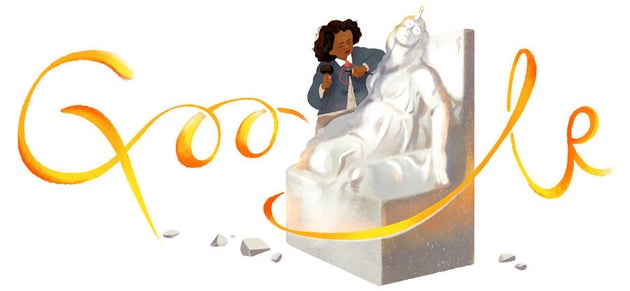New U.S. stamp for 2022 honors Black, Native American woman from Upstate NYPosted in Articles, Arts, Biography, Media Archive, Native Americans/First Nation, United States, Women on 2022-01-06 03:30Z by Steven |
New U.S. stamp for 2022 honors Black, Native American woman from Upstate NY
Syracuse.com
2022-01-02
Geoff Herbert, Reporter and SEO Lead

A new U.S. stamp will honor an Upstate New York woman who was the first Black and Native American sculptor to earn international recognition.
The U.S. Postal Service said the 45th stamp in its Black Heritage series will celebrate Edmonia Lewis, who was born in 1844 in Greenbush, N.Y., and spent most of her career in Rome, Italy. According to the Times Union, her mother was an Ojibwa/Chippewa woman from Albany known for embroidering moccasins and her father was a freed slave who worked as a gentleman’s servant in Rensselaer County; when her mother died, Lewis was known as Wildfire while living with her maternal relatives.
“She identified first as a Native American. Later she identified more as an African American. She was in two worlds. She deserves her stamp,” Bobbie Reno, an East Greenbush town historian who campaigned for Lewis’ recognition, told the Times Union…
…According to the USPS, the Edmonia Lewis stamp will debut Wednesday, Jan. 26, at 12:30 p.m. ET at the Smithsonian American Art Museum in Washington, D.C. The stamp, which features a portrait of Lewis based on a photograph of her in Boston between 1864 and 1871, will be available in post offices nationwide in panes of 20….
Read the entire article here.


